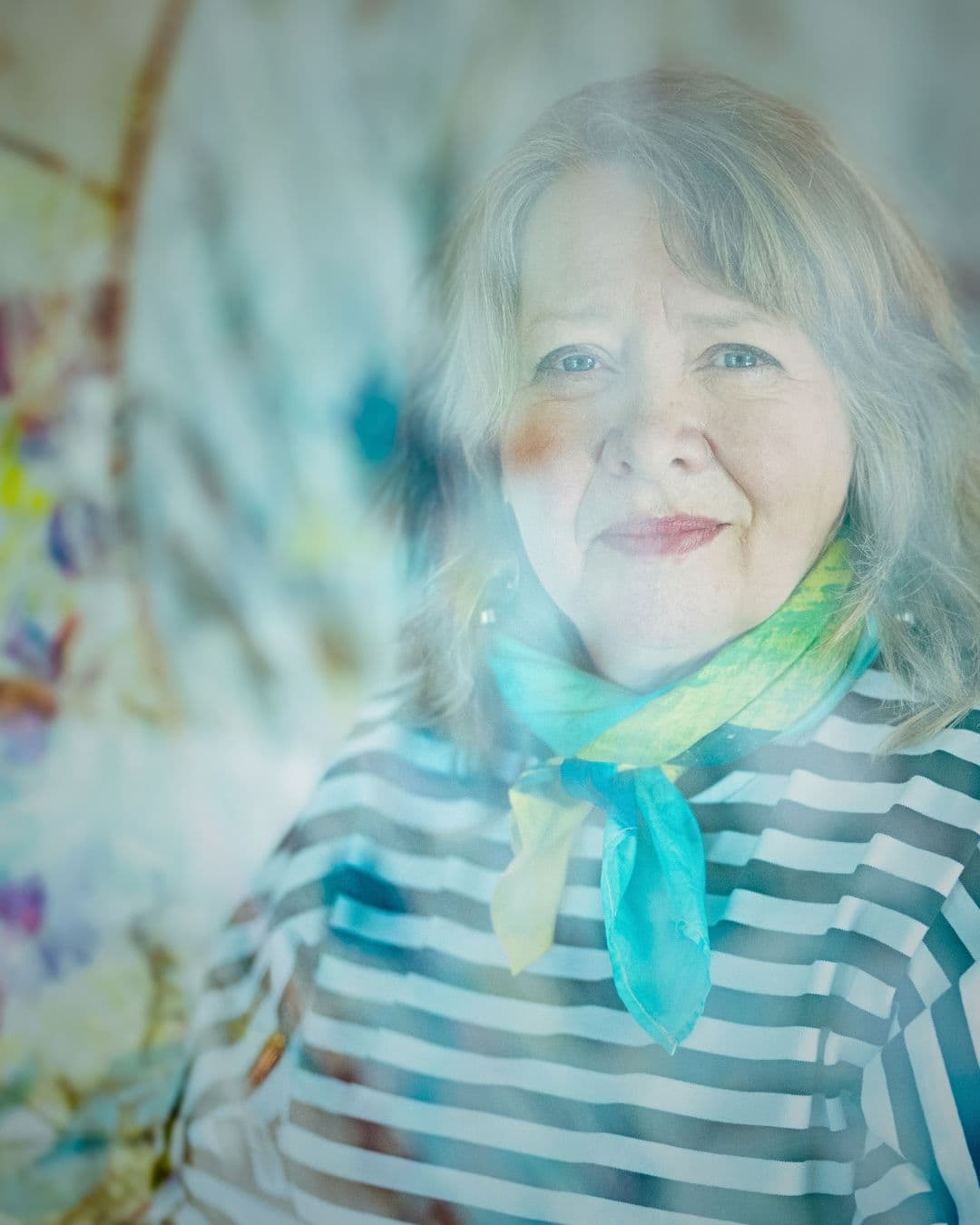YOUR CART
- No products in the cart.
Subtotal:
$0.00

The fragility of life and its fleeting memories is what fascinates artist Vinny Stapley most. Layering delicate materials with faded imagery and mixed media, her ethereal works suggest the precarious nature of memory. And they show the lasting influence that people can have on their family and friends.
Vintage tulle veils and laces feature strongly in Vinny’s art, perfectly expressing the transience of time and remembrance. Screen printing, digital imagery and other mixed media elements add dimension and texture.
Vinny also has a passion for the impermanence of nature, especially the coastline plants on her beloved Mersea Island. She places the focus on intertidal flora, including sea holly, purslane, and shrubby and annual sea-blite – plants that take centre stage in the struggle to protect fragile beaches from erosion.
Enjoy this look into Vinny’s dreamlike work. It gently reminds us that time waits for no one.
“Cloth, that old silent companion of the human race, has always kept special company with artists.”
Mildred Constantine & Laurel Reuter, Whole Cloth
Vinny Stapley: I mostly work with transparent or sheer fabrics. The familiar feel of the finest silk tulle veiling and antique lace reminds me of working for a wedding dress designer when I first came to London.
I also find that fabrics received from family become memory banks of my personal history. And found items of textiles and clothing make me wonder about the origins and lives of those who first had them. What stories do they tell me?
I especially enjoy using these vintage finds or making delicately constructed web-like veils. I’ll use a combination of layers of different processes and will sometimes add old photographs or text to develop the narrative of a piece.
Silk, cotton organdie and tulles are my go-to fabrics. For my seascapes, I have also used calico, linen and canvas.
Veils are especially fascinating to me, as they can express a variety of contradictory concepts such as youthful innocence, alluring beauty and fading or blemished beauty.
Sheer fabrics can be very tricky to work with, so sometimes I’ll add a dissolvable embroidery stabiliser. Otherwise, it’s a matter of confidence. After years of working with delicate materials, I’ve learned how to use a firm, yet gentle hand, smoothing and stretching as I go.
“Veils can be intriguing, secretive, feminine, mournful, hopeful and respectful.”
Vinny Stapley, Textile artist
I’m fascinated by the concept of memento mori, a Latin phrase that reminds us about death’s inevitability and the fleeting nature of earthly pleasures. To that end, fragility and delicacy play key roles in my work. I especially admire the brittle beauty of age-distressed vintage laces and delicate tulles.
I remember watching Great Expectations as a young girl and being intrigued by Miss Havisham’s faded beauty and grandeur. I began to see a correlation between those fabrics, the fragility of memory, and human nature.
I’m also intrigued by perceptions of women’s fragility and the vulnerable and darker sides of femininity. For example, my installation Arachne’s Metaphor was inspired by the Greek myth of Arachne who was turned into a spider and doomed to weave for eternity by the jealous goddess Athena.
This research led to my investigations of the extraordinary stories of ordinary women and the threads of life that connect them. I collected stories of female relatives who struggled to survive and further their families in the face of what society, governments and the patriarchy expected of and imposed upon them.
Those ordinary women metamorphosed into stronger beings who survived by their wits and talents, weaving their own webs and creating foundations for their lives.
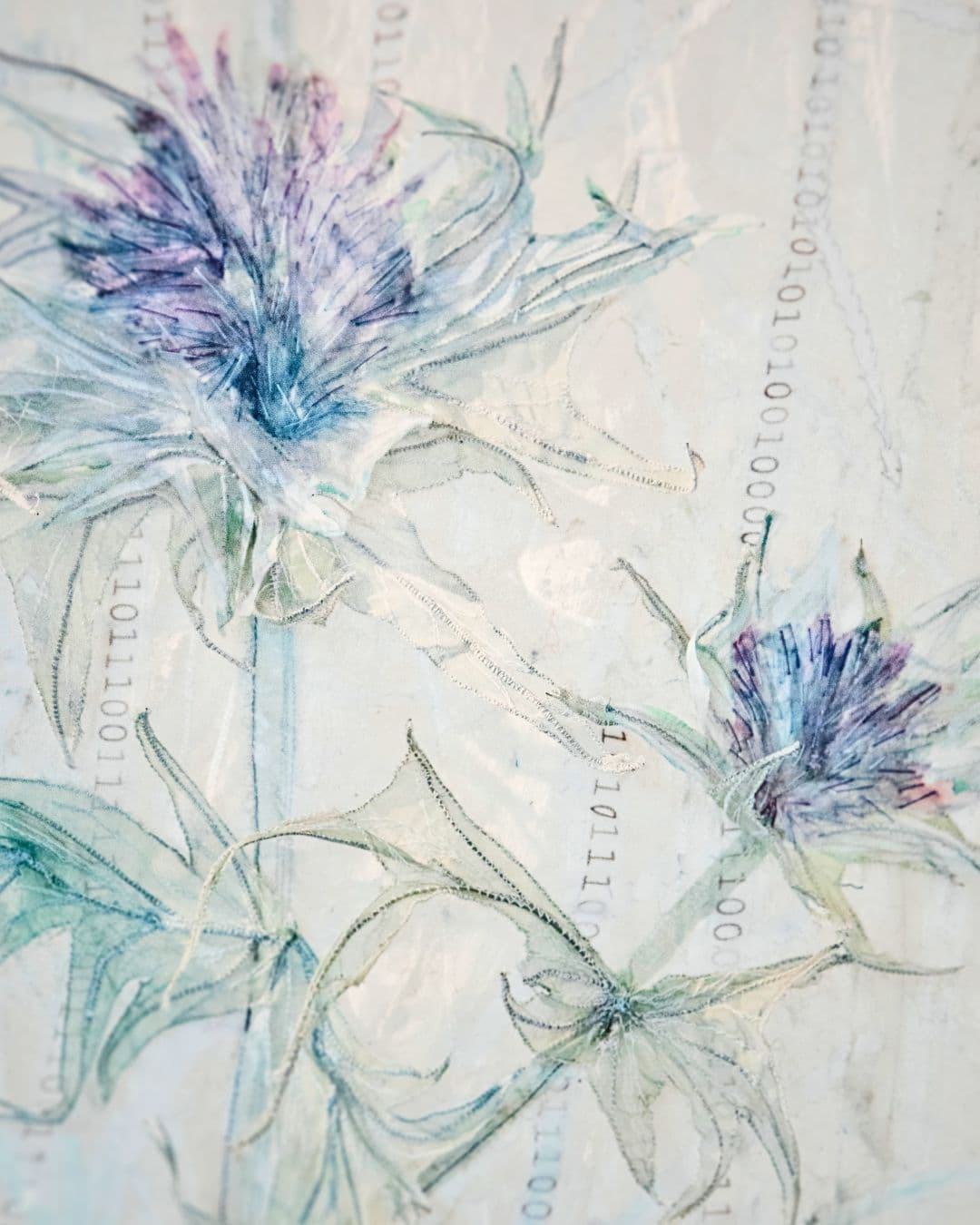
In addition to notions of fragility, much of my work explores the link between family history and the legacy it can have on the living.
We not only acquire physical attributes, talents and skills from our ancestors, but we also inherit our family’s tragedies, heartbreaks and hardships. Those events can leave their own genetic imprint on our personality.
I explore the impact that family secrets can have on subsequent generations. I’m both horrified and fascinated by the way previous generations have behaved. The perceived shame brought upon the family, according to social customs at the time, caused people to bury truths and treat their loved ones most cruelly, in the name of respectability.
To represent the burying of family secrets and their shame, I layer delicate materials (often family fabrics or lace) and incorporate faded imagery and mixed media. The various textures become distressed and more fragile, representing how our memories become harder to read and more difficult to recall over time.
“Subsequent generations can find themselves shocked by the discovery of these secrets and their effect on family dynamics.”
Vinny Stapley, Textile artist
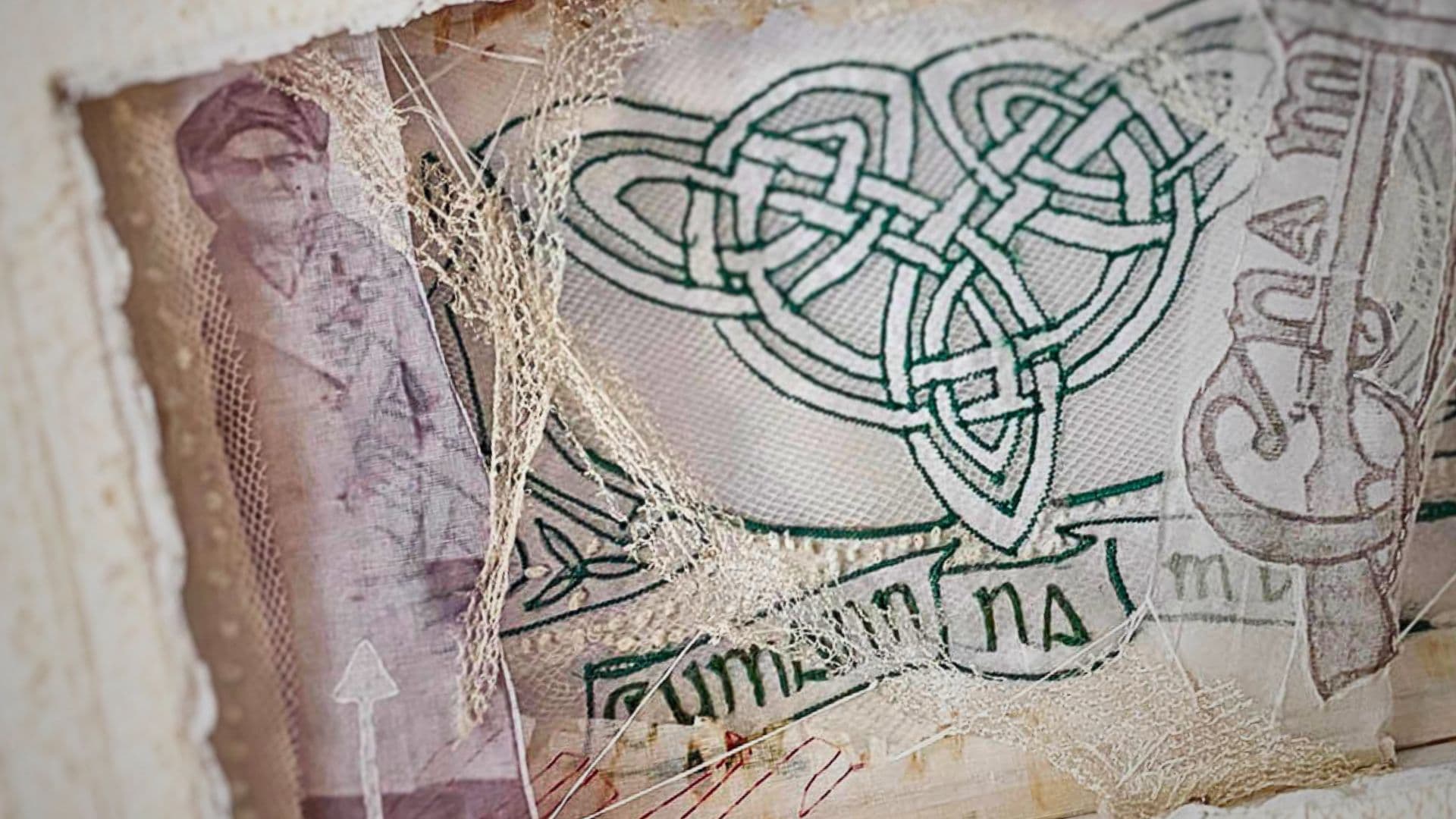
Inspiration can be varied. Sometimes I’ll have a bit of a vision and work backwards from there. Other times I start with a topic or theme for an exhibition, and then research and write down concepts and ideas. Mind mapping helps, and observational drawing is an essential part of my practice.
Once I have a topic in mind, I’ll widely research that idea and document what I discover as a visual language in my sketchbooks. I then gather or dye up all the fabrics, threads and components I think I’ll use.
I create samples by screen printing, machine stitch and hand embroidery. I’m also increasingly using Photoshop to develop imagery and design visualisations. Responding to these samples, I’ll sketch out some compositional studies and then go on to develop slightly larger prototypes before making the final piece.
“I explore and interrogate materials, techniques and concepts through sampling.”
Vinny Stapley, Textile artist
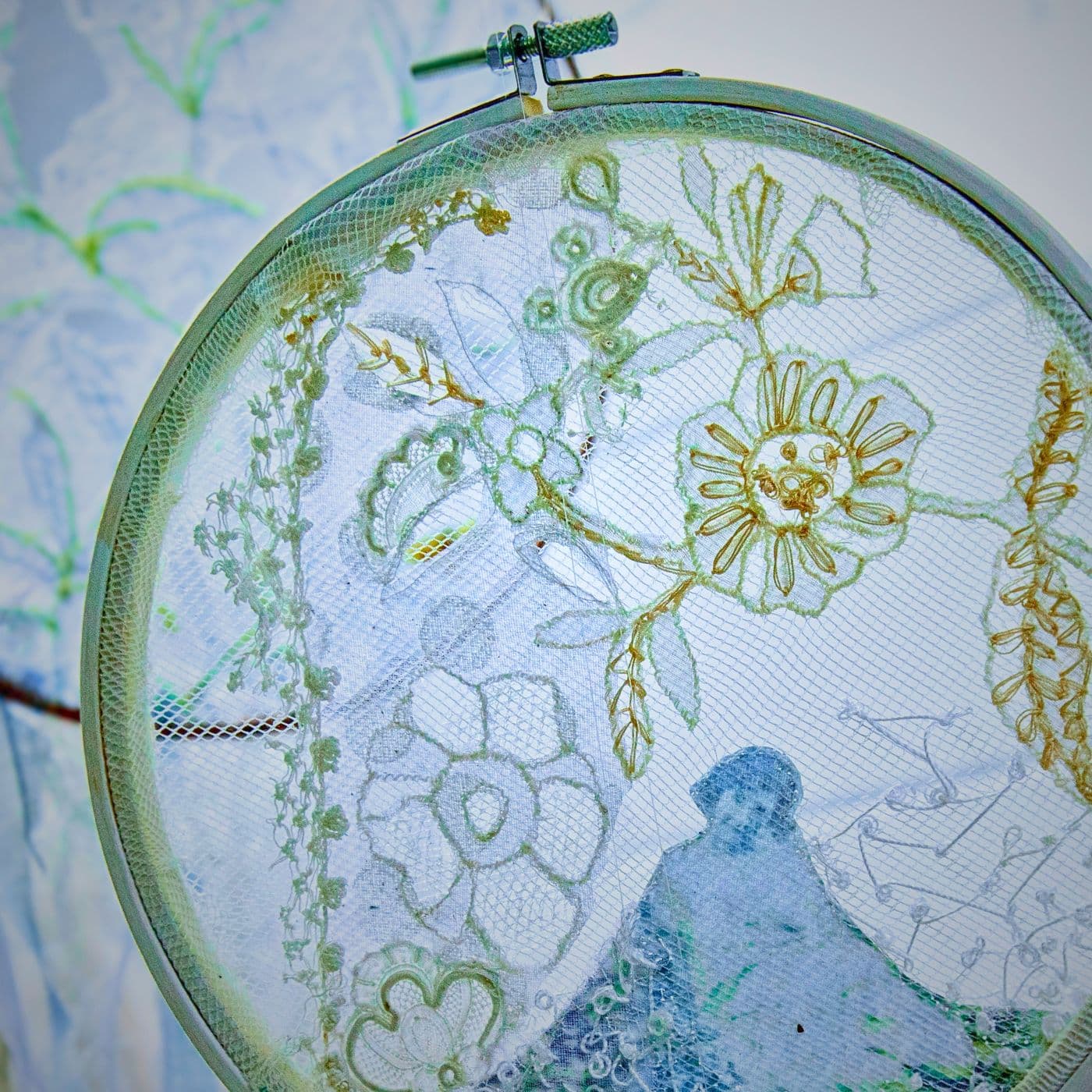
In my Stitch Club workshop, I teach some of my techniques so that members create an atmospheric and personal embroidered memory disc on tulle.
Choosing a special moment in time, memory, person or place, they can incorporate delicate distressed fabrics and memento mori such as old family photos, paper, fabrics and embroidered motifs that connect to their theme. Stitching is also used as embellishment.
Creating a colour palette is fundamental to everything. It sets the mood, feel and emotion which helps link to the concept behind the piece.
At the moment, my favourite colour palette is very desaturated and chalk-coloured. It’s mostly naturals and neutrals, to present a vintage feel and help describe the passage of time, women’s stories and femininity.
My advice for learning how to choose a colour palette is to find a painting or a page from a garden or fashion magazine that you think expresses a certain feeling or particular mood. Then get a paint chart from a DIY store and pick out six colours from that image: one deep, two mid, two light, as well as one colour that will pop.
You can then create a mood board using fabrics, threads and paint, mixed and matched to the shades you selected. You might also incorporate found materials.
“I always like to throw in a colour pop – it can be minimal but it performs the important task of creating balance.”
Vinny Stapley, Textile artist
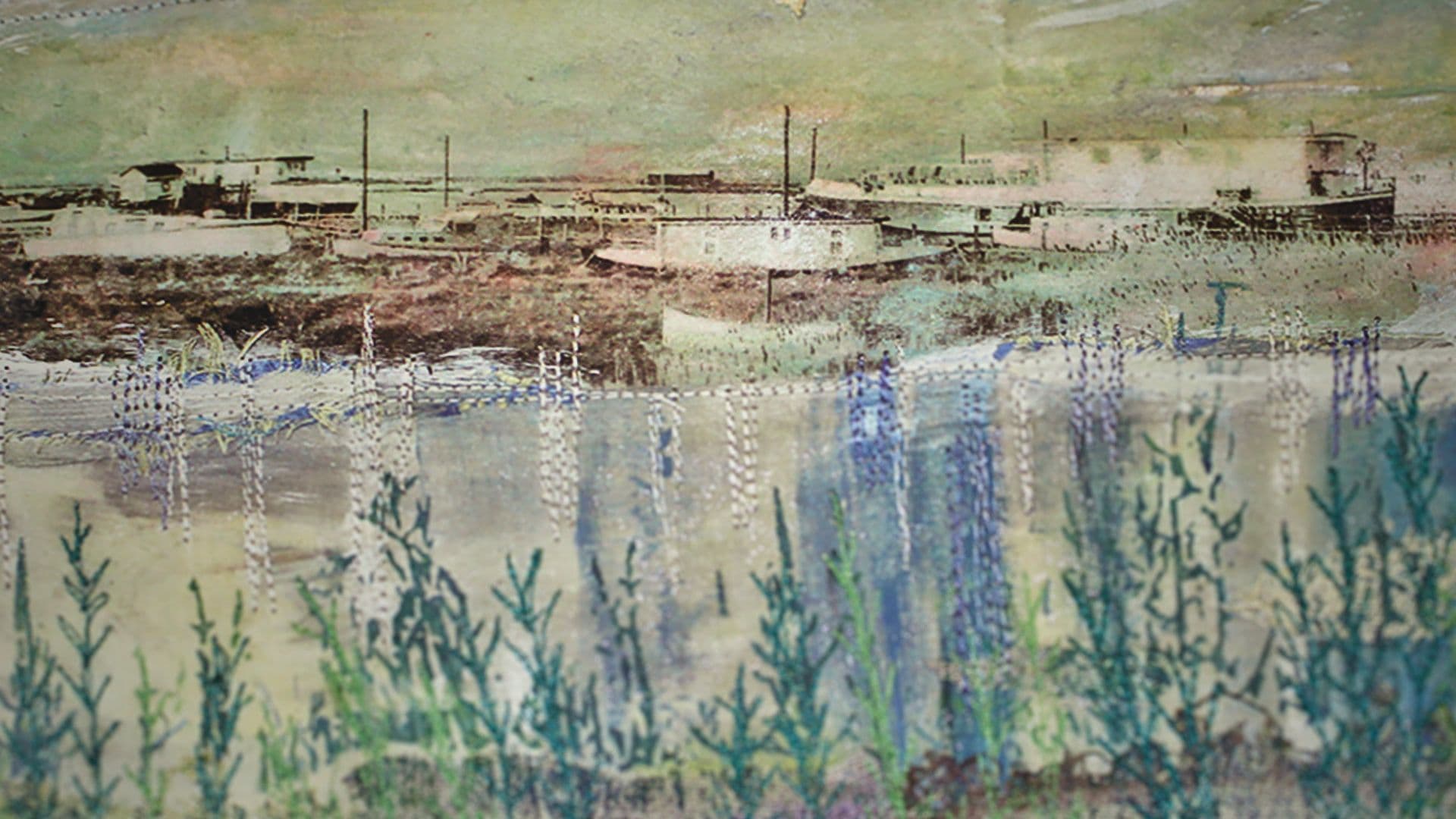
Stitch is such an emotive medium. It can echo the rhythmic nature of the sea’s ebb and flow or mimic a range of emotions. Stitching is a meditative, immersive and mindful process where ideas evolve as the work progresses.
Machine embroidery is my go-to passion. I love the contrast of edginess and the linear fluidity of the stitched line.
I can easily become lost and mesmerised as my body connects to the machine. There’s a kind of ‘syncretism’ (an attempted reconciliation or union of) different or opposing principles.
When it comes to hand stitching, I prefer the authenticity of using simple stitches, such as the running and seed stitch. I’m also very partial to traditional tailors’ tacking stitches, and I really love a French knot.
I mainly use vintage threads for hand stitching.
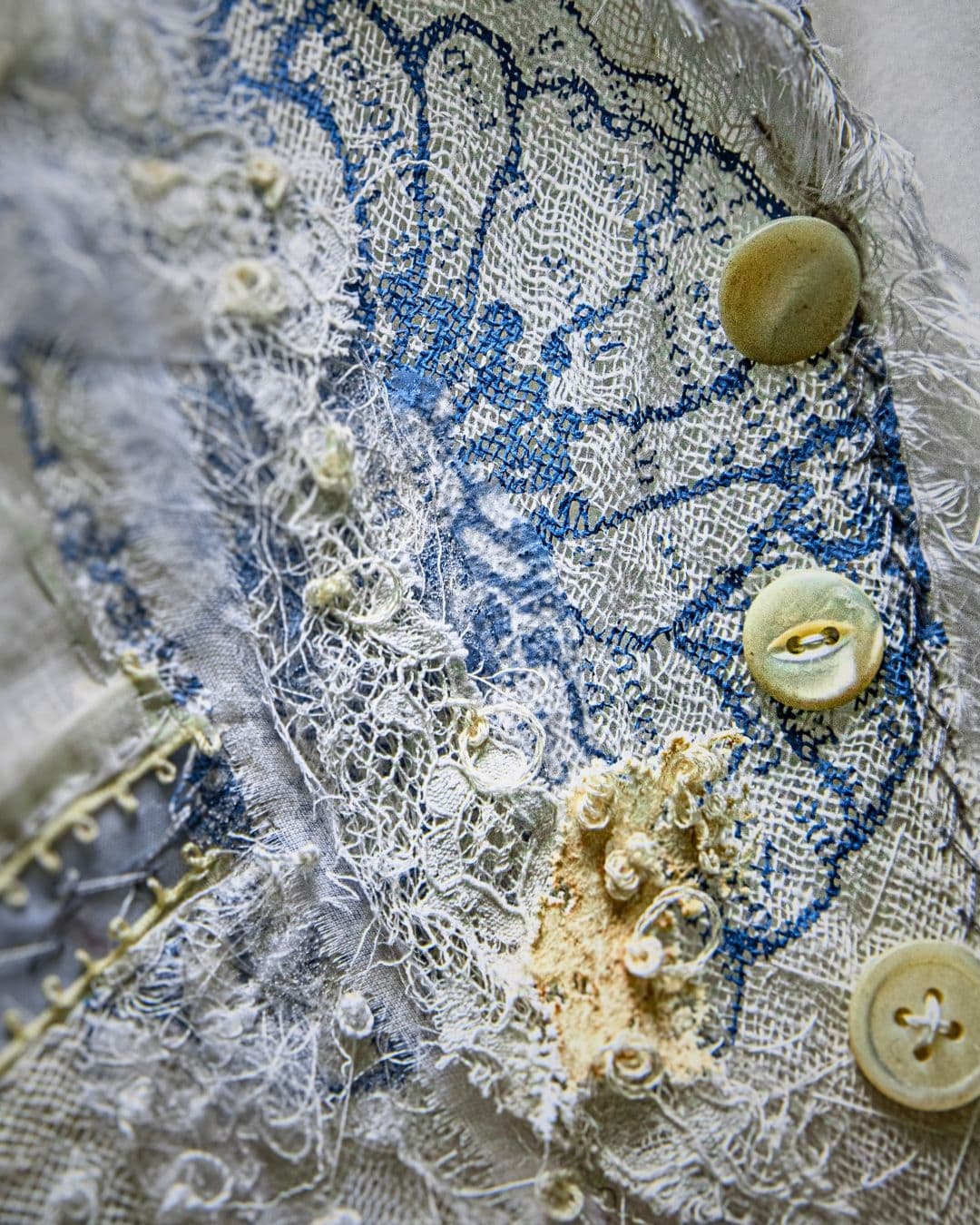
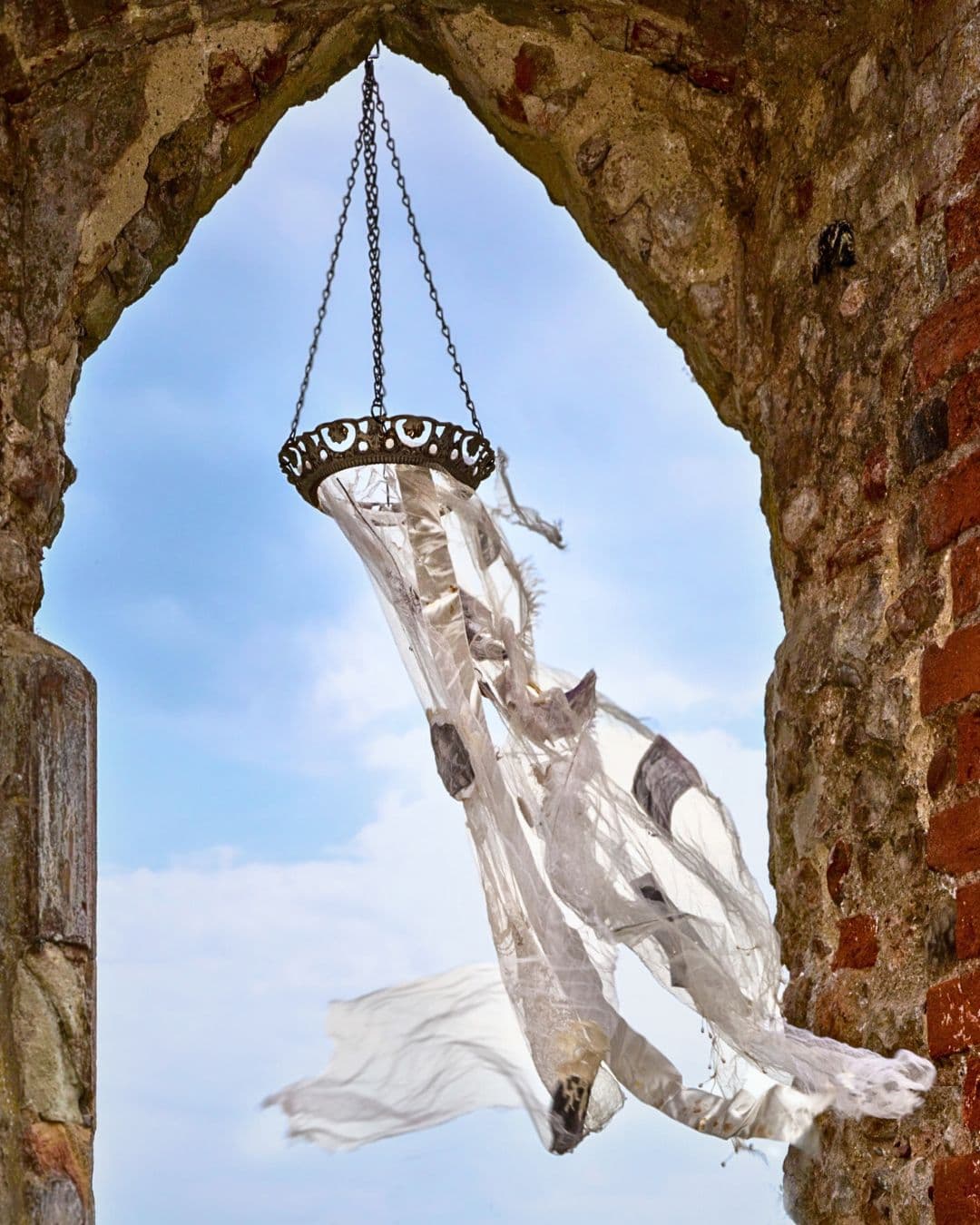
“My screen printed fabrics serve as a great stimulus to get my creative juices flowing.”
Vinny Stapley, Textile artist
Vinny Stapley: I’ve always sewn and used fabrics to make things from a very young age. We had plenty of fabric and dressing-up clothes around our house, as my mother made and knitted nearly everything we wore. There was very little available to buy, growing up in the Highlands.
I also adored the BBC children’s TV show Blue Peter, especially the ‘makes’, and was always trying to copy them. But I had to use what we had to hand, which made me experiment and invent (not always successfully).
I was lucky to have inspiring art teachers in high school. They viewed textiles as a fine art medium. One teacher saw that I naturally gravitated to textiles. She encouraged me to experiment with a range of embroidery stitches to create final exam pieces. And she taught me how to create natural dyes in the art department’s stock cupboard using a Bunsen burner!
Another wonderful teacher taught me to screen print, and I was immediately hooked. I loved the process and how I could achieve a range of very different outcomes.
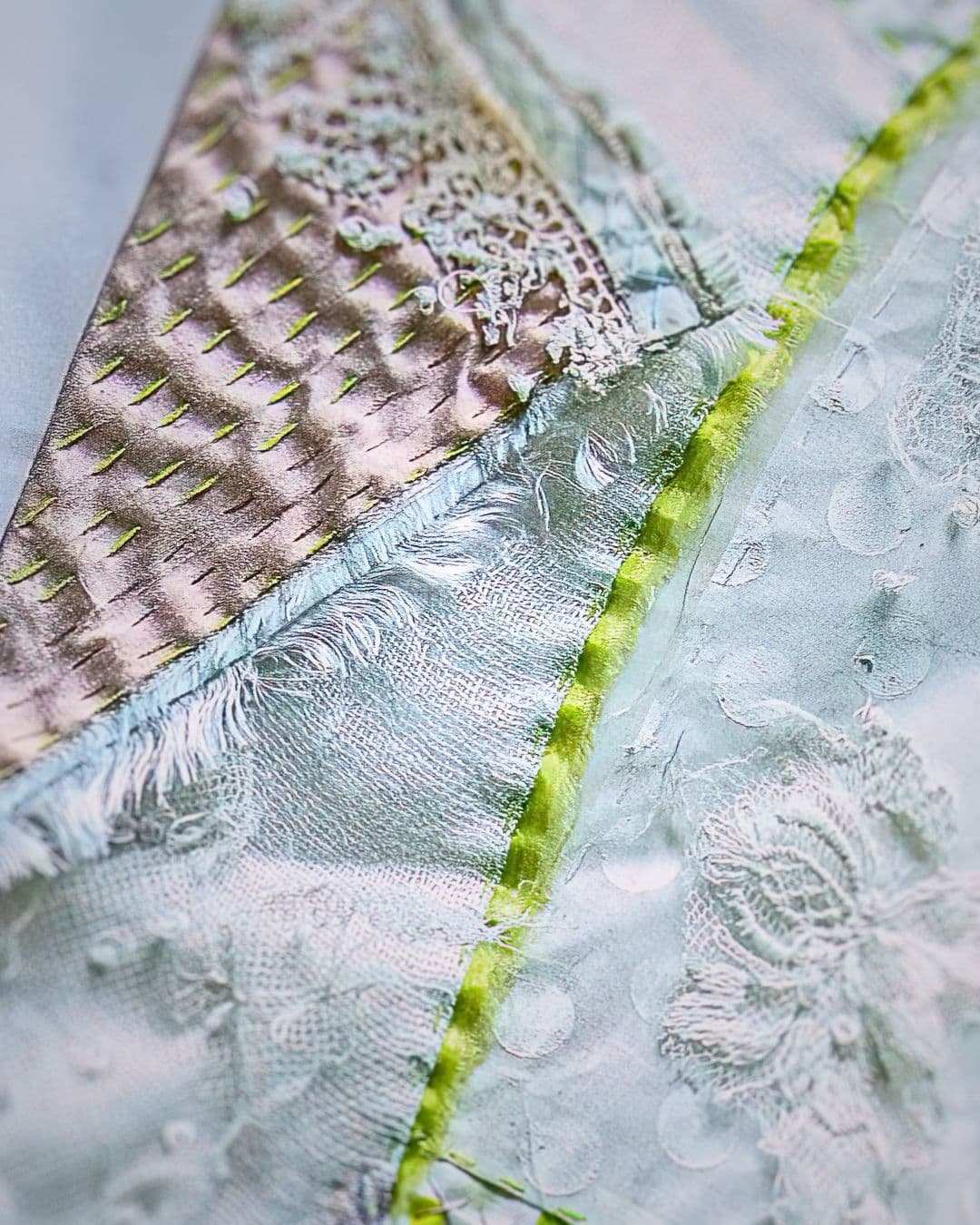
I took up a place at Edinburgh School of Art after leaving high school, but I decided to leave and move to London. I joined various bands, and after gaining practical experience working in a small, bespoke wedding dress design studio, I had the opportunity to become a wardrobe technician for touring bands.
Later, I became a production assistant for touring recording artists. I travelled extensively and gained lots of experience working with a whole range of different materials, from studded leather to beaded Bob Mackie gowns.
I stopped travelling when my family came along and I began making bespoke special occasion wear and costumes.
“I had a sense of unfinished business and missed art, so I started taking some art courses.”
Vinny Stapley, Textile artist
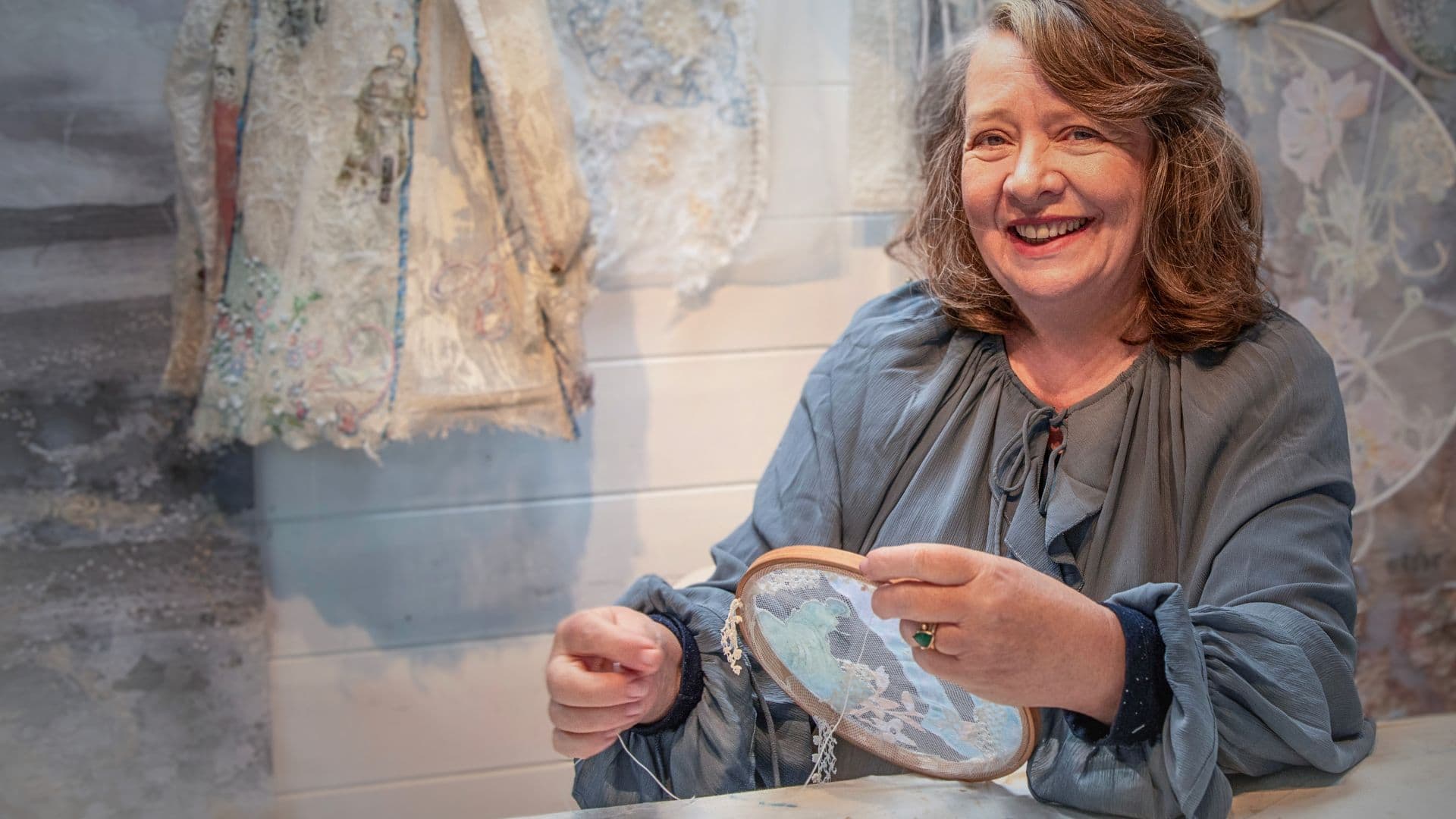
While attending some art courses, tutors encouraged me to complete an Art Foundation. Following this, I gained a place in the Printed Textiles degree course at Middlesex University (London, UK), continuing to combine my screen printing with embroidery.
After my degree, a large London studio offered me a job as a textile designer specialising in embroidery. Following this, I went on to work freelance for a textile agent.
I loved the creativity, but as a parent, I found it hard to create a successful work-life balance. I decided to complete a teacher-training degree and went on to teach art in large London comprehensive schools.
It wasn’t until the children left home, and my husband and I moved to Mersea Island in Essex, that I decided to take the plunge and develop my career as an artist. I started with open studios, public and private commissions, and artist residencies in schools. I eventually built up to having a larger studio and offering workshops.
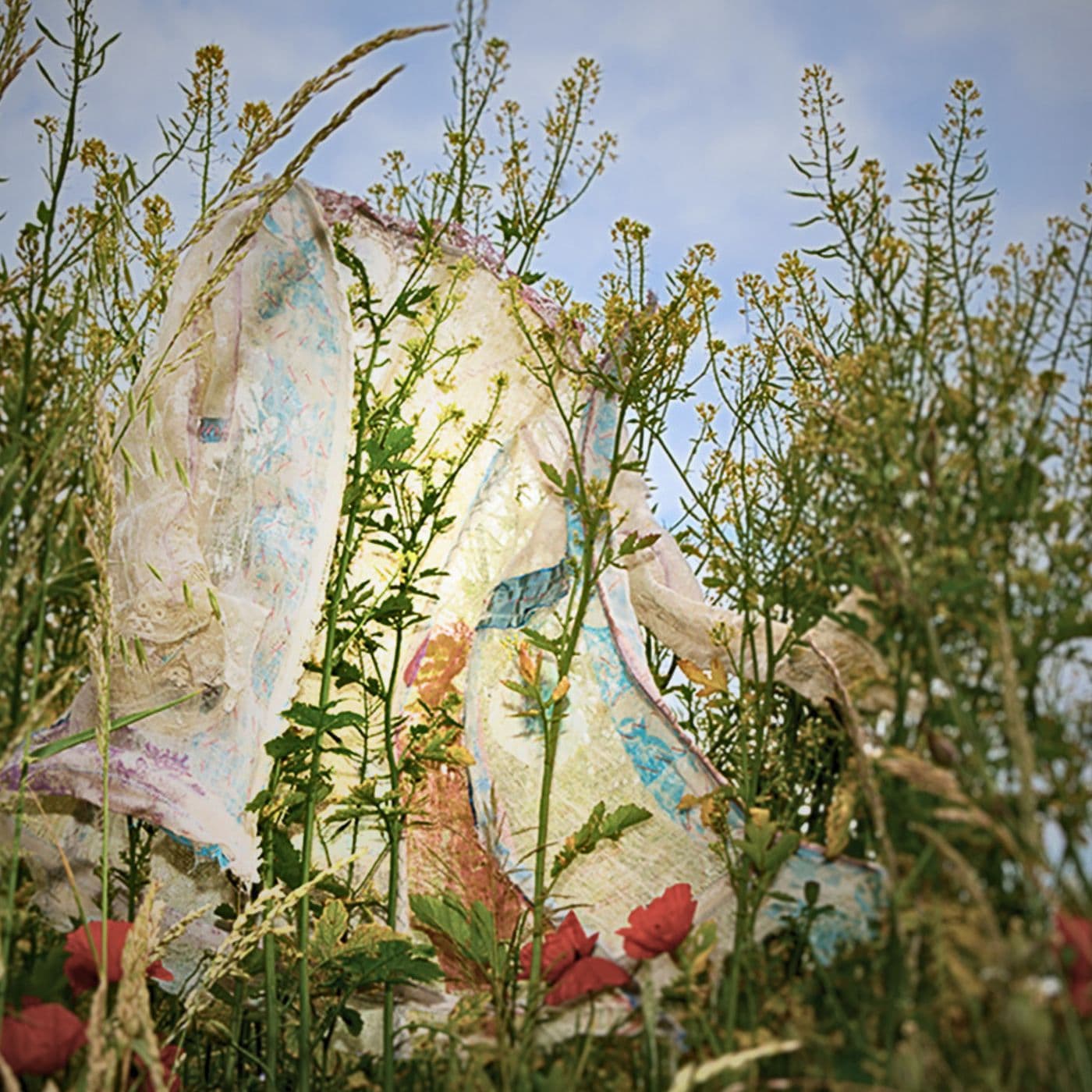
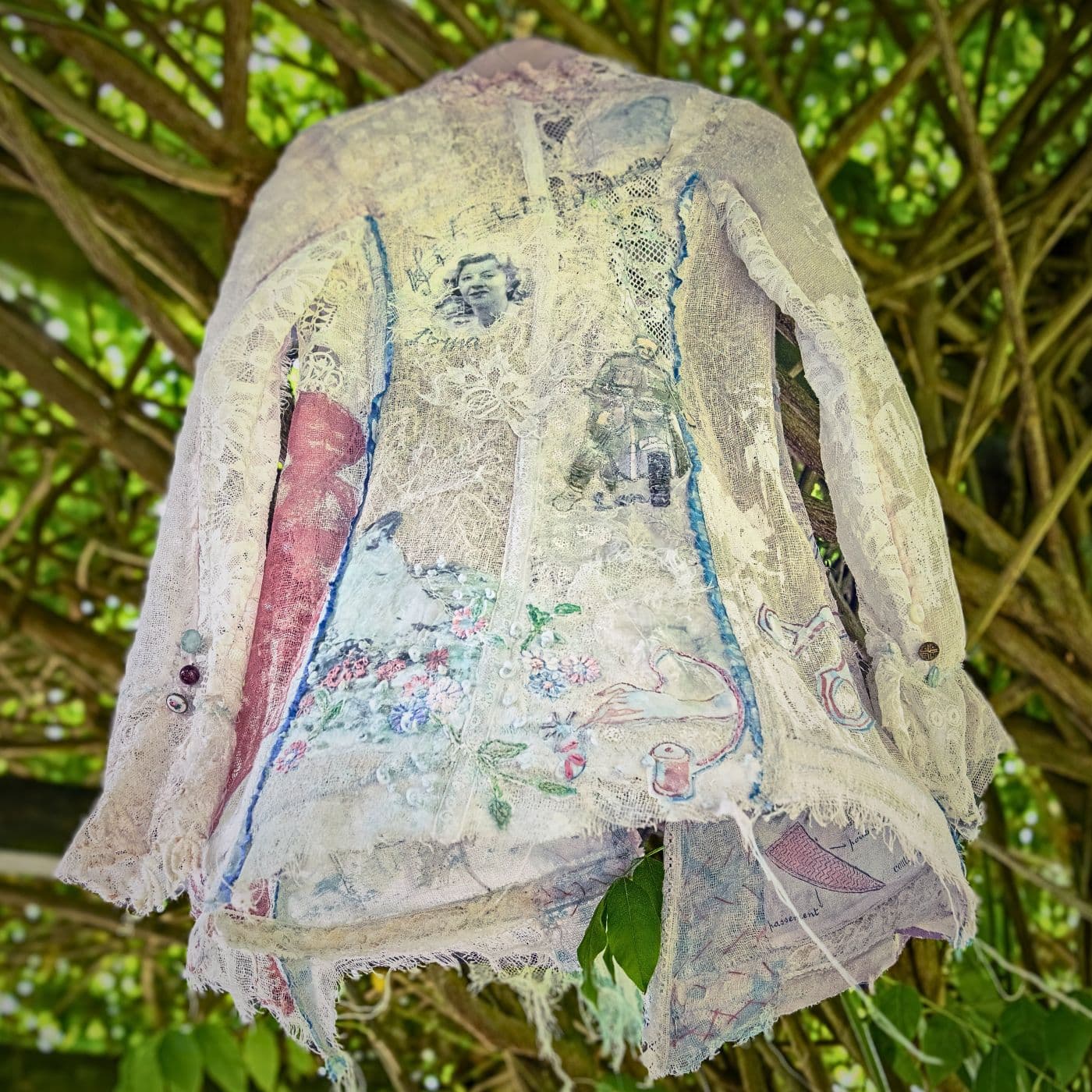
I love direct screen printing techniques, where you place the pigments directly on the screen. It’s like painting, and I use these printed pieces as a base for adding further layers of appliqué, as well as machine and hand embroidery. I may also add photo stencil printing in layers.
Wax resist is also a technique that lends itself well to working with textiles. I’ll maybe start with some drawing with a candle or oil pastel and then add dyes or inks. Sometimes I let layers of paint or gesso dry before adding drawing inks or fabric dyes.
I also work with charcoal or graphite or even a fine line pen, before adding inks, dyes or watercolours.
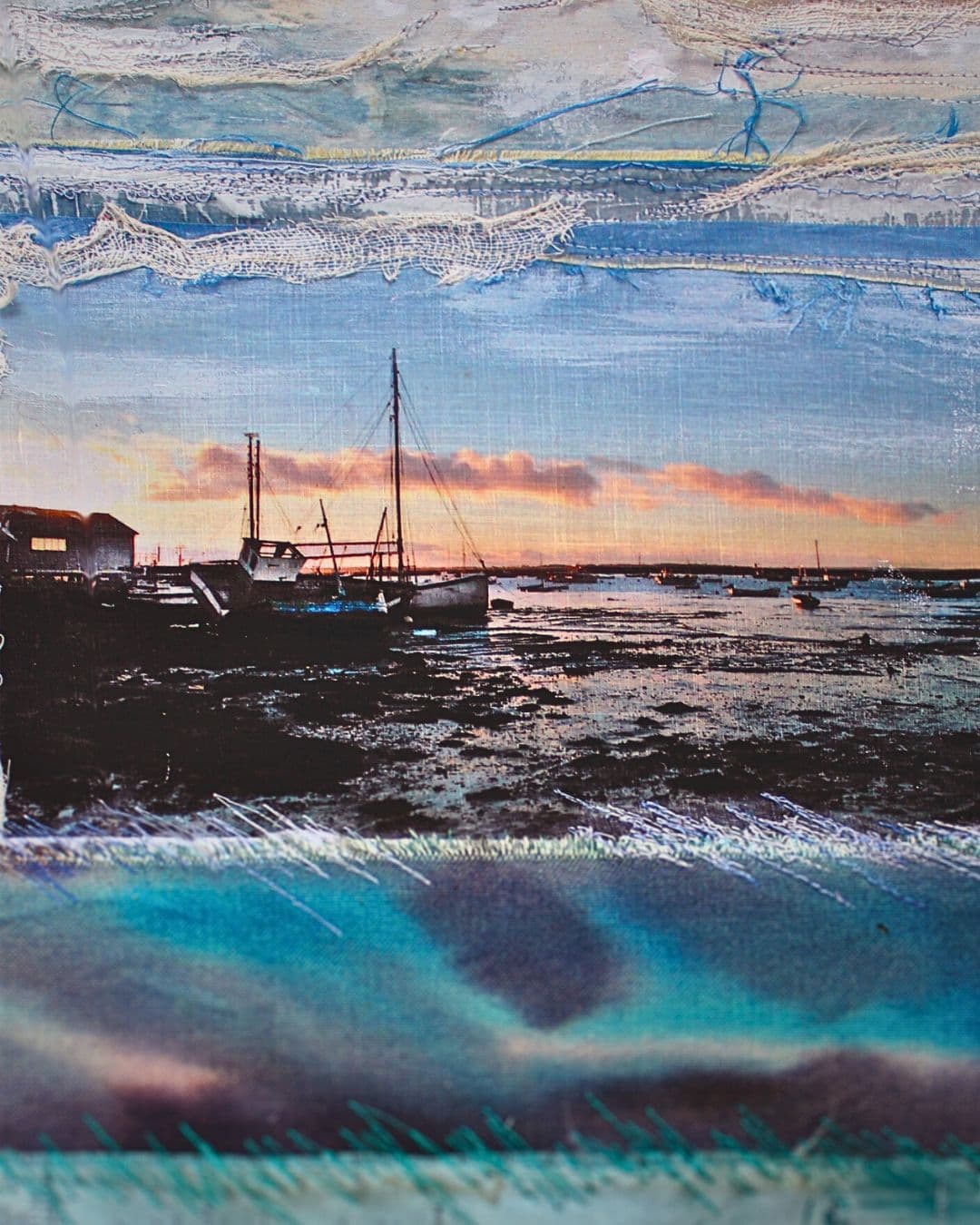
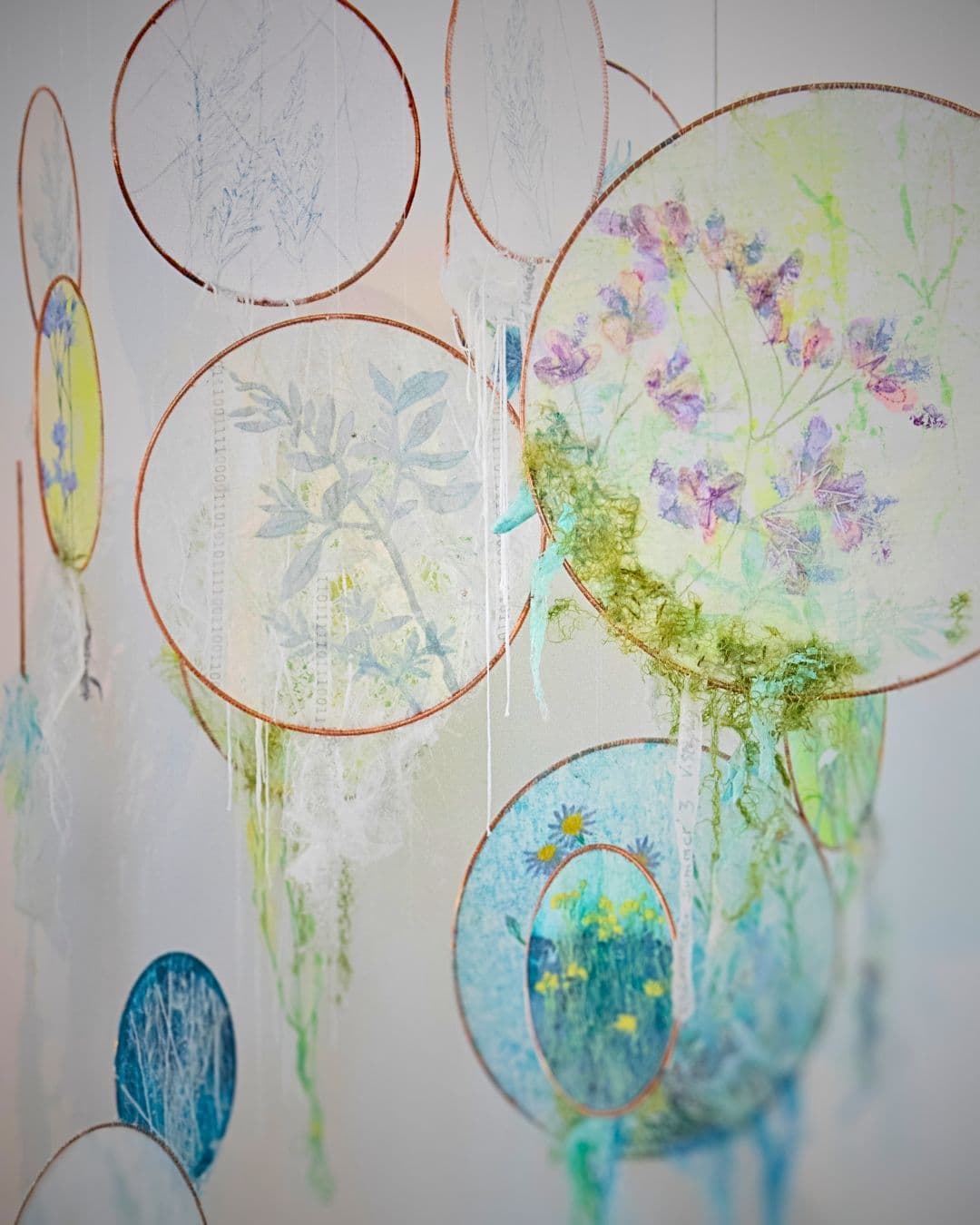
I created Mersea Florilegium in response to my concern about Mersea Island’s eroding coastlines. I see daily evidence of rising sea levels that wash away whole chunks of coastline. My work highlights the importance of the plants within the intertidal zone, such as sea purslane and shrubby sea-blite, that help mesh the delicate coastline.
This collection started by studying the flora on the shores of Mersea Island during the various lockdowns. I made observational drawings and learned about the ecology of the salt marsh. I charted all the locations of sea holly on the island. A year later, I discovered that many had disappeared.
I also made sketches exploring the fine root networks of the plants. These help to stabilise the fragile coastline against the incursions of the sea.
“My research inspired an installation featuring a collection of semi-transparent hanging disks focusing on plants I observed on my lockdown walks.”
Vinny Stapley, Textile artist
In this installation, the ethereal, lens-like discs move kinetically, reflecting my thoughts and occasionally zooming in on abstracted moments in time. It’s meant to be a celebration of the visual, cerebral and the cellular.
I focused on purslane and sea holly and developed delicate web-like hanging gossamer veils. I became aware of the commonality between the plant roots and the digital connections forged among family and friends that sustain us through times of separation.
Within the layers, I incorporated strips of binary code symbolising these connections, and I embroidered words representing the locations of the sea holly plants on the island.
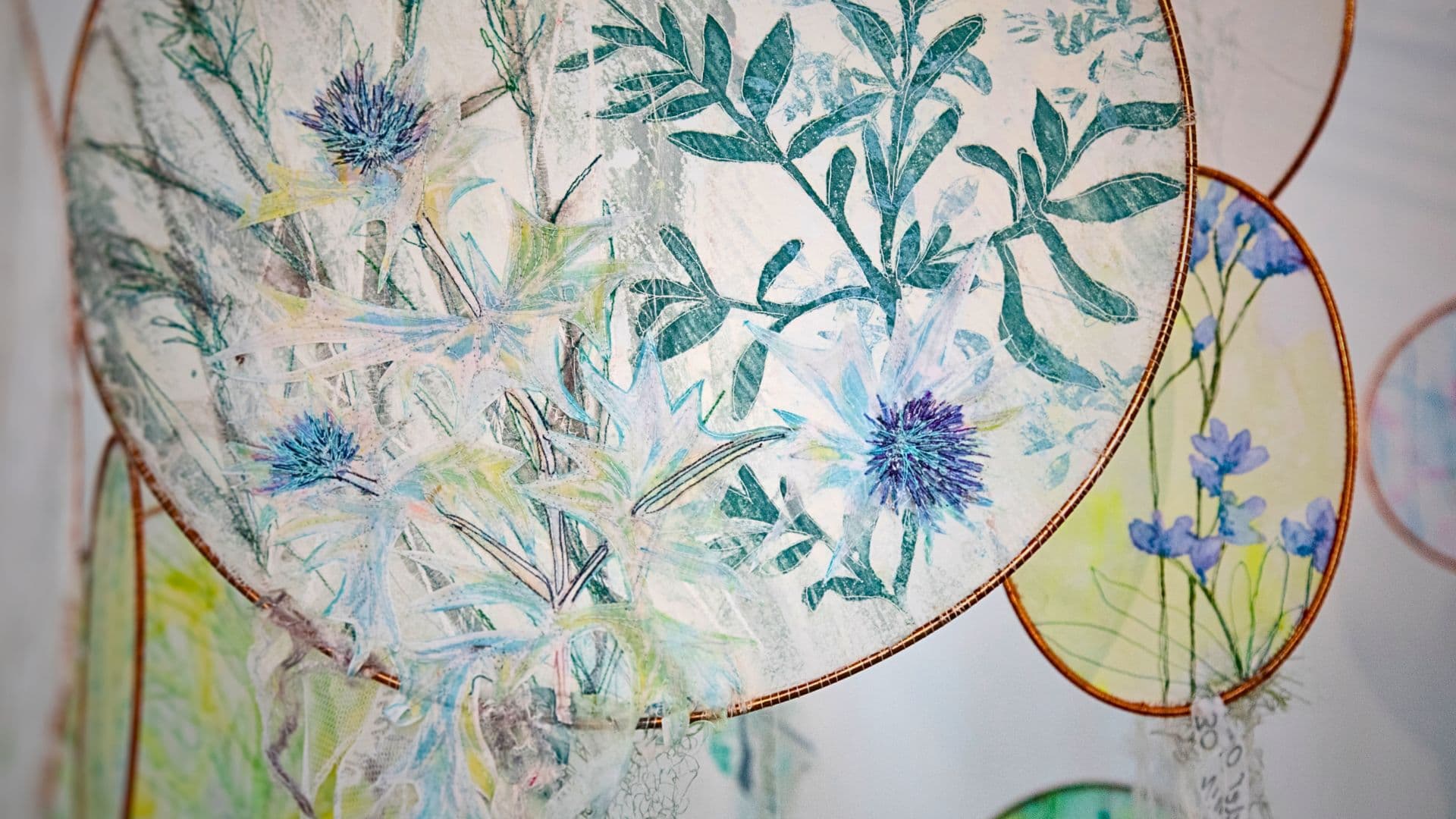
In keeping with my fascination with memento mori, Sea Holly Memento Mori II features the sea holly plant that lines our coastline and collected fragments of lace; forgotten pieces of women’s painstaking handiwork found in my collection. They symbolise the fragility of life and ecology.
The sea holly’s ability to thrive amidst coastal erosion and human intervention is powerful. Historically it was harvested for its sweet root, an important commodity in the time of James I.
Machine-embroidered layers of mixed media webs with fragments of old lace symbolise the delicately balanced ecosystem of flora in the intertidal zone.
Arachne’s Metaphor and the Dark Island hanging are part of a single installation that was initially inspired by the Greek myth about Athena and Arachne. The jealous goddess Athena turns Arachne into a spider who is doomed to weave for eternity.
That myth led me to consider stories of ordinary women, including my mother, who struggled to survive and nurture their families in the wake of patriarchal systems imposed upon them.
After posting about my mother’s story on Instagram, I received similar stories from family and friends, which inspired a series of filigree lace-framed icon pictures commemorating the women.
The imagery connects to the women’s sometimes painful stories through the use of desaturated, delicate sheer layers and hangings. The icons also incorporate archive photography, vintage textiles, and stitch techniques relating to the women’s stories, such as sashiko and carrickmacross.
The framed icon pictures are connected by delicate webs that stretch out and connect the women’s lives across time and space. Fragments of old clothes and household linens symbolise the strands of their lives, interwoven with silk fibres and printed extracts of their stories.
